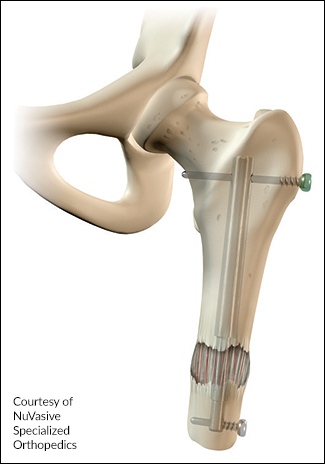Amputees with Short Residual Limbs
What is a short residual limb, and how does it affect patients who have had a limb amputated?
A short residual limb, sometimes called an amputation stump, occurs when the length of remaining bone segment after an amputation is shorter than desired. Surgeons generally try to preserve as much residual stump length as possible. However, the pre-operative diagnosis responsible for the amputation usually dictates the level of the amputation and the remaining length of residual limb.
In order for the amputated limb to function with a prosthesis, a certain minimal length of the residual limb is required. There is no set minimal or ideal length for a particular amputated bone segment. It depends on the functional demand. A short residual limb limits both the type of prosthesis available and the patient’s ability to control it.
For example, a very short upper tibia (shinbone) may not allow a patient to be fitted with a below-the-knee prosthesis, but if the short tibial remnant is lengthened, it may make it possible. The same is true for a patient with a short forearm stump. The remaining radius and ulna bones can be lengthened to permit a below-the-elbow prosthetic fitting.
Short femoral (thigh bone) remnants can make it impossible to fit a patient with an above-the-knee prosthesis. In those cases, a more awkward, heavy, and less functional hip disarticulation prosthesis may be required. Bilateral short femur amputees also have sitting balance problems. Lengthening of the short residual femur will facilitate above-the-knee prosthetic fitting and improve sitting balance for bilateral amputees.
How has demand for increased function created a greater demand for lengthening short residual limbs?
Higher functional expectation from current generation amputees has created a greater demand for lengthening short residual limbs. Twenty years ago, the goal for most amputees was simply to be able to walk again with the prosthetic leg. Nowadays, many amputees would like not only to walk, but also to run and play sports. To meet this higher functional demand, many patients living with an amputated limb are exploring if lengthening their residual limb will enable them to live more active lives.
What are the treatment options for patients with short residual limbs?
 Precice Freedom Nail
Precice Freedom NailThe treatment options for amputees with short residual limbs are to have the stump prosthesis modified and/or to lengthen the residual limb. Limb lengthening is usually achieved, by surgically attaching an external fixator and then performing an osteotomy (bone cut). The external fixator is adjusted daily to gradually lengthen the bone. For short residual femurs in high above knee amputations, prosthetic fitting may be particularly challenging. NuVasive’s Precice Freedom Nail is designed to lengthen short above-knee amputation stumps without the need of an external fixator. Lengthening the residual limb can significantly improve prosthetic fit and function, and may enable the patient to be more physically active.
Why choose the International Center for Limb Lengthening for treatment of short residual limbs after amputation?
Limb lengthening is a complex process. Your doctor at the International Center for Limb Lengthening will take the time to make sure you understand all your options and then will customize your treatment to meet your specific needs. Our patients benefit from our team-centered approach with world-renowned surgeons and specialized physician assistants, nurses and physical therapists. We help patients with short residual limbs after amputation achieve their best possible result.



